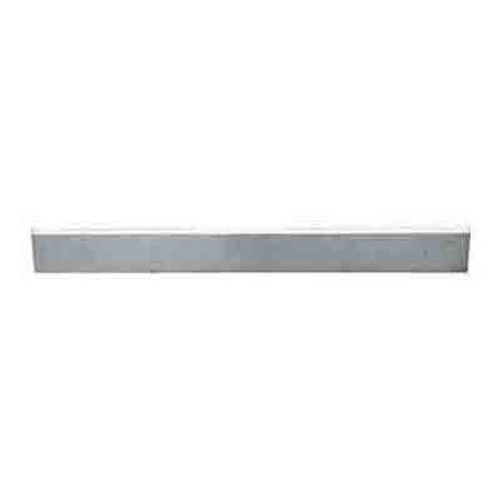Fast
Shipping
Quick,
Simple Ordering
Clear,
Upfront Pricing
Over 30,000
Happy Customers
Exceptional
Customer Service
Industry's Largest
Catalog
The 12" Steel Straight Edge w/ Bevel Edge with electro-polished finish will not corrode and the precision-ground beveled edge remains straight and true after many uses. Model has no markings. Made from quality 304 stainless steel and used in many ASTM and AASHTO concrete and soil test methods for trimming and leveling specimens.
Dimensions: 11.81 x 1.57 x 0.125in (300 x 40 x 3.2mm), L x W x D
View full line of Flow of Cement Mortar products and AASHTO M 152/152M Standards for Cement Tests products and AASHTO T 137
The 12" Steel Straight Edge w/ Bevel Edge is a durable and reliable tool that every professional needs. Made from high-quality 304 stainless steel, this straight edge will not corrode and is built to last. Its electro-polished finish adds to its longevity, making it resistant to wear and tear.
One of the standout features of this straight edge is its precision-ground beveled edge. This edge remains straight and true even after countless uses. This ensures accurate and precise measurements every time, making it ideal for trimming and leveling concrete and soil specimens.
With its sleek and compact design, this straight edge is convenient to use and carry around. Measuring at 11.81 x 1.57 x 0.125in (300 x 40 x 3.2mm), it fits perfectly into any toolbox or work bag. Its lightweight construction adds to its portability, making it a must-have for professionals on the go.
While this particular model does not have markings, it is still an invaluable tool for a variety of applications. Its versatility is evident in its use in many ASTM and AASHTO concrete and soil test methods. With this straight edge, you'll be able to achieve precise and accurate results in your tests and experiments, ensuring the highest level of quality and reliability in your work.
If you're in the market for other cement-related products or looking for standards for cement tests, be sure to explore our full line of Flow of Cement Mortar products and AASHTO M 152/152M Standards for Cement Tests products. We also offer AASHTO T 137 Standards for Cement Tests products, ensuring that you have all the necessary tools to meet industry standards and achieve perfection in your work.
Invest in the 12" Steel Straight Edge w/ Bevel Edge today and experience the precision and durability that it brings to your professional projects.
View the full line of Self-Consolidating Concrete (SCC) products
Related Blogs for Concrete Tests
An Overview of Self Consolidating Concrete in 2023
Using SCC Concrete: Advantage of Optimizing for Construction
Self-Healing Concrete: Benefits & Uses
10 Reasons to Use Self-consolidating Concrete (SCC)
Uncovering the Best Slump Cone: A Comprehensive Guide
Understanding the Slump Tester & Its Uses
Slump Test of Concrete: A Comprehensive Guide
Slump Test Table: Measure Workability of Concrete
Tampering Rod for Concrete Slump and Cylinder Mold Tests
Slump Test: Measuring the Consistency of Fresh Concrete
Concrete Slump: What Is It and Why Does it Matter?
Finding the Workability of Concrete with the Slump Test
How to Perform a Slump Test of Concrete: Steps and Results
Consistency of Concrete; How It's Measured, Why It's Important, and Relation to Workability
The Proper Pressure with Certified Concrete Testing Products
Materials Testing Experts Explain The Importance Of Concrete Testing
Tamping Rod: Find the Perfect Fit for Your Concrete Testing
Choosing the Right Concrete Scoop for Reliable Slump Tests
Guide to Slump Test Concrete: Methods, Tips & Significance
Flow Test of Concrete: Unlocking Workability Wonders
Slump Concrete Meaning: Consistency & Quality Control
ASTM C 143 Slump Test: Mastering Concrete Consistency
Metric System: A Guide to Units & Conversions
Tamping Rod for Concrete: Guide to Best Applications
Slump Concrete Test: Procedures and Significance
Concrete Slump: The Key to Quality and Workability
Concrete Water Permeability for Durability and Performance
Decoding the Surface: Is Concrete Porous or Nonporous?
Initial Set Time of Concrete: Key Factors & Practical Tips
Consistency in Concrete: Key Factors and Testing Techniques
Sand Cone Test Explained: Techniques and Best Practices
Sand Equivalent Test: What Can You Learn



